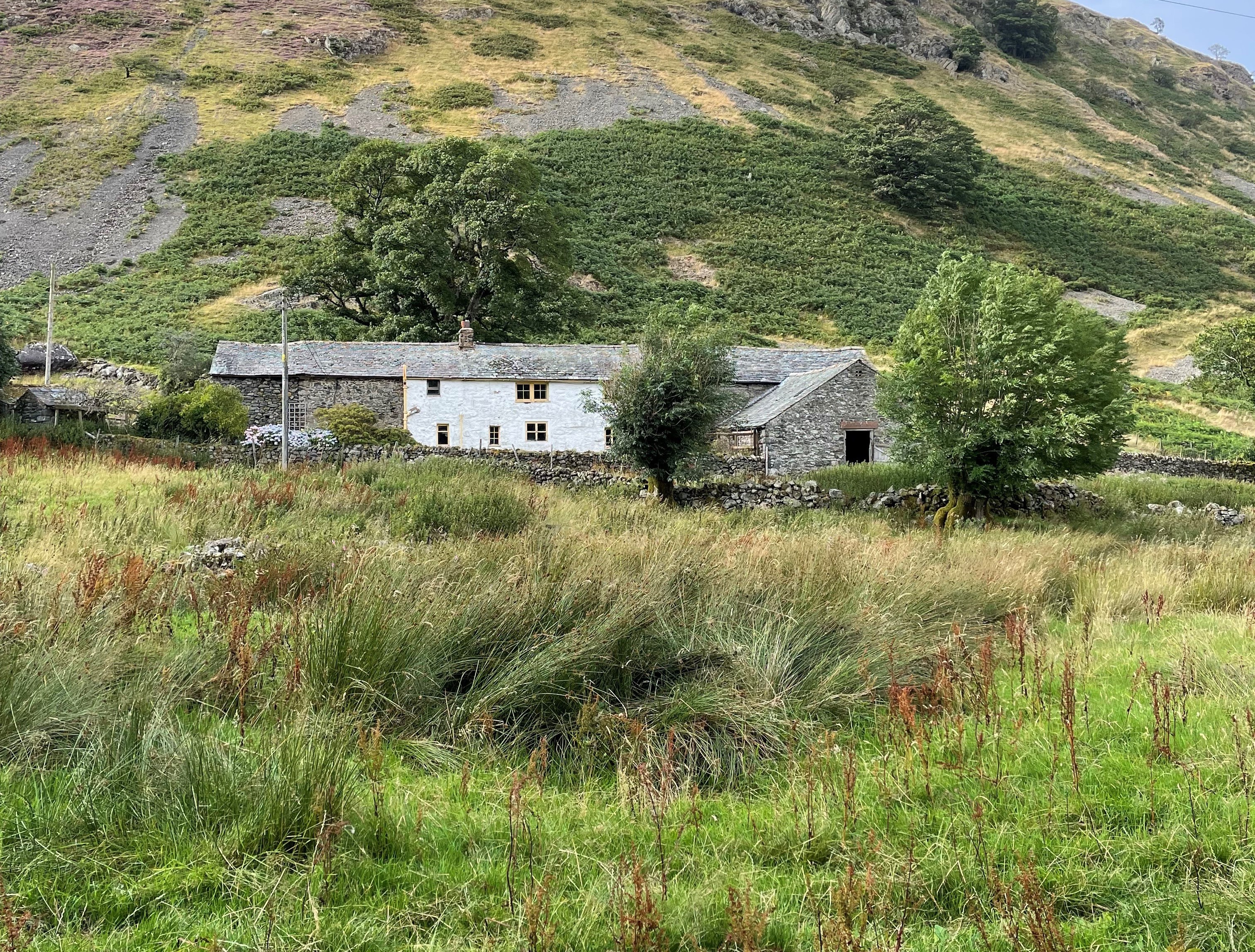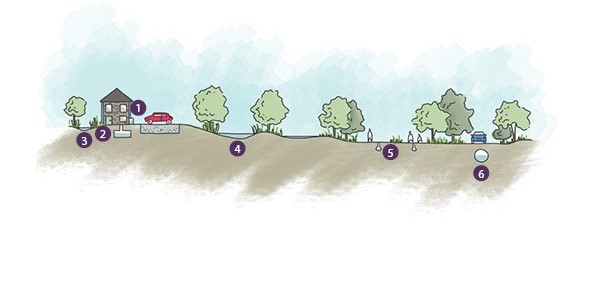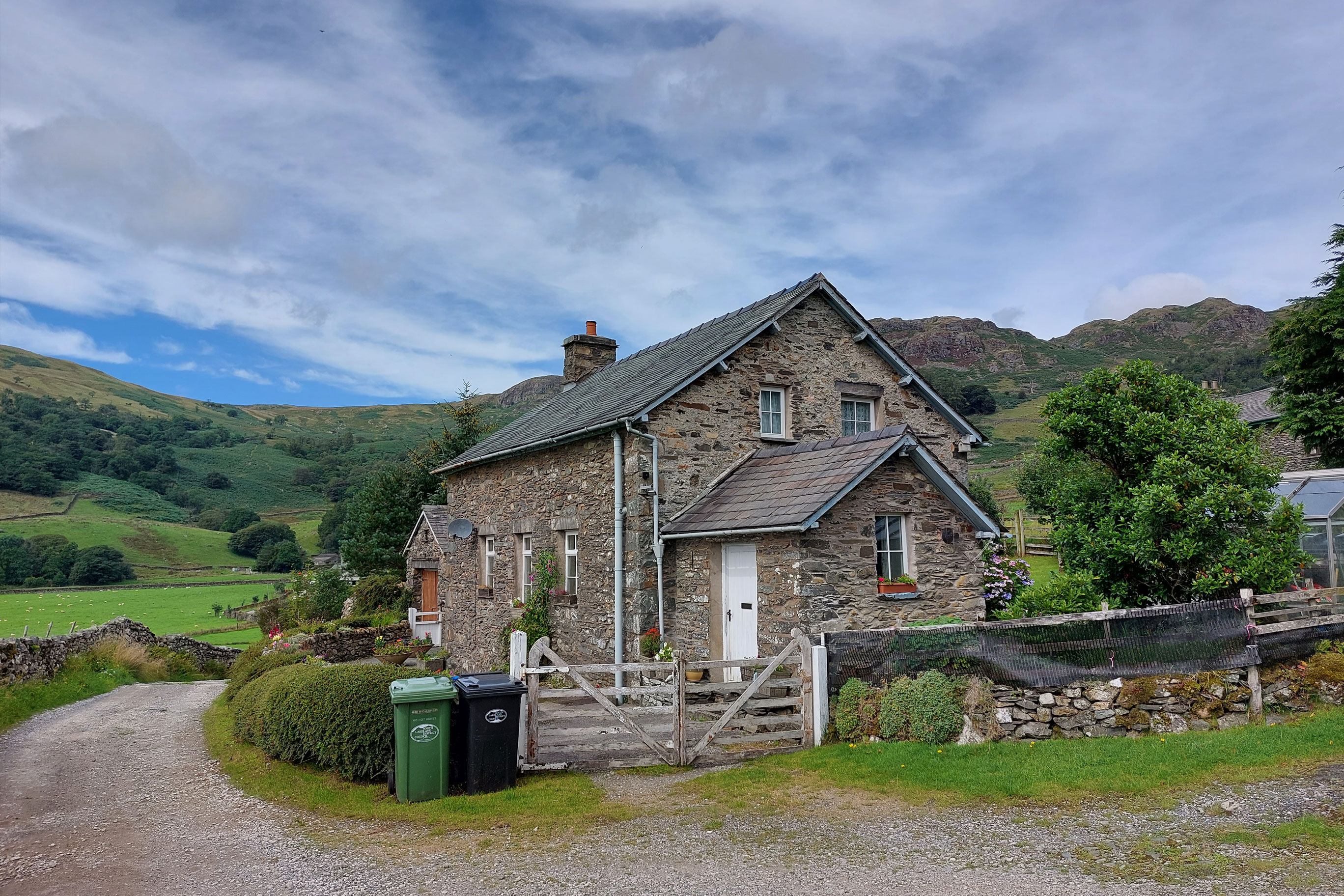
Code
Existing green and blue features, including hedgerows, trees, watercourses and ponds must be retained and incorporated into designs, unless to the proposal can demonstrate net benefits to green infrastructure.
All development must reinforce the green infrastructure network both within and surrounding the site.
Private gardens should utilise mature shrub and tree species to create visual interest, year-round structure and wildlife refuge.
Native species, ideally of local provenance, will be favoured over non-native species due to their role in reinforcing the Lake District's unique landscape character and providing for local wildlife.
Where boundary features are required to plots and/or sites, use boundary features such as:
Rainwater harvesting systems should be installed in all conversions. This will ease the pressure on the local water supply during drought periods. All conversions should incorporate water butts.
All conversions must integrate Sustainable Drainage Systems (SuDS) that achieve greenfield run-off rates. This must be demonstrated through a site-specific drainage strategy.
In all development situations, the SuDS Management Train must be applied, as illustrated below. Surface water that is captured and managed above-ground on site for non-potable uses, such as irrigation, will always be favoured.
Where surface water is discharged into a watercourse, surface water sewer or drain or combined sewer (respectively options 4, 5 or 6 below) it must first pass through an attenuation measure as outlined in option 3, below.

Click to zoom in
SuDS must be considered in the early stages of design and, where possible, incorporated within the design. Multifunctional SuDS that also allow for biodiversity and recreation will be favoured.
The form, function and design of SuDS will vary on a site-by-site basis depending on topography, ground conditions, permeability, contamination potential, adjacent watercourses and the sensitivity of groundwater receptors.
Where sites have been previously developed, the potential for ‘replacing redundant or paved or sealed surfaces and replacing this with SuDS should be explored.
The design of new SuDS must carefully, yet imaginatively, respond to local character and the setting of the scheme.
The creative use of permeable paving and gullies that respond to their context is encouraged.
Planting choice within SuDS must consider how biodiversity and pollinators can best be provided for. The incorporation of trees and larger specimens is encouraged. The use of native plant and tree species is required.
SuDS should contribute to amenity and biodiversity. For these reasons ‘pipe to basin’ SuDS where runoff is channelled into an underground tank must only be used as a last resort to manage water runoff from a site.
The longevity of SuDS and their ongoing maintenance must be secured for the lifetime of the development. Consideration should be given to futureproofing SuDS by ensuring their capacity built today can accommodate the likely heavier rainfall events of the future. The likely long-term flood risk for a particular address can be found on the government’s website.
Applicants should refer to the SuDS Manual for detailed guidance on the correct application of SuDS in their scheme, including calculating and using greenfield run-off rates.
Code
Conversions adjacent to water must respond sensitively to the ecological, recreational and visual amenity of the asset, as well as have consideration for the flood risk it can pose, and the potential for contaminated run-off. Within the Lake District, water can include lakes, rivers, streams, ponds, wetlands, estuaries and the sea.
Particular design considerations must be given to conversions that are located on lake shores due to the prominence of their position in views from the lake and from other shores.
Primary frontages must be delivered on both the road-facing sides of the building to preserve visual amenity from both aspects.
Where conversions sit within large plots along lake shores, gaps between adjoining properties should be retained to allow for glimpsed views of the lake and opposite shores.
Existing trees and mature vegetation must be retained on sites unless for exceptional reasons. New tree planting is encouraged to soften views of new built form and to help integrate it into the wider landscape.
Conversions along lake shores should retain expanses of open gardens and lawn adjacent to the water. Built form up to and on the water's edge should be limited to boat houses.
The following checklist must be used to ensure new development that is located adjacent to water is designed sensitively:
Conversions are expected to demonstrate an overall positive impact on the natural environment. Development should contribute to nature recovery through the creation of more areas of wildlife-rich habitat in bigger patches, of better quality, that are more joined-up (see Cumbria Local Nature Recovery Strategy (LNRS)).
The priority is to retain and enhance existing habitat features of local biodiversity importance (see LNRS), for example, species-rich grasslands – both hay meadows and pasture in the low-lying valleys and lower slopes or provision of a number of Swift bricks, in all cases but especially where there is a Swift colony in the vicinity.
Any loss of habitat should be reinstated, for example reinstating hedgerows around the boundary or, where this is not possible, compensated. A qualified ecologist will make locally appropriate recommendations for biodiversity enhancements as part of the ecological assessment process.
BNG, and more general ecological enhancements delivered as part of development, should be locally appropriate and contribute to the Nature Recovery Network. As part of this network, BNG or general enhancements contribute to the reinstatement, restoration or reintroduction of local conservation priority species (as part of the emerging LNRS, an updated list of Priority Cumbria Species will be developed). The Building with Nature standards or emerging tools such as the Environmental Benefits for Nature Tool or the NATURE Tool can be used to find locally-appropriate restoration planting schemes.
Development must avoid potential impact on protected species. Where this is not possible, the Natural England licensing requirements apply (determined in the ecological assessment in light of the unavoidable impacts at the application site).
Natural environment enhancements can be delivered by:
Code
Artificial grass must not be used as it has no ecological value and introduces ecological harms by removing grass habitat and introducing and impermeable plastic surface.
